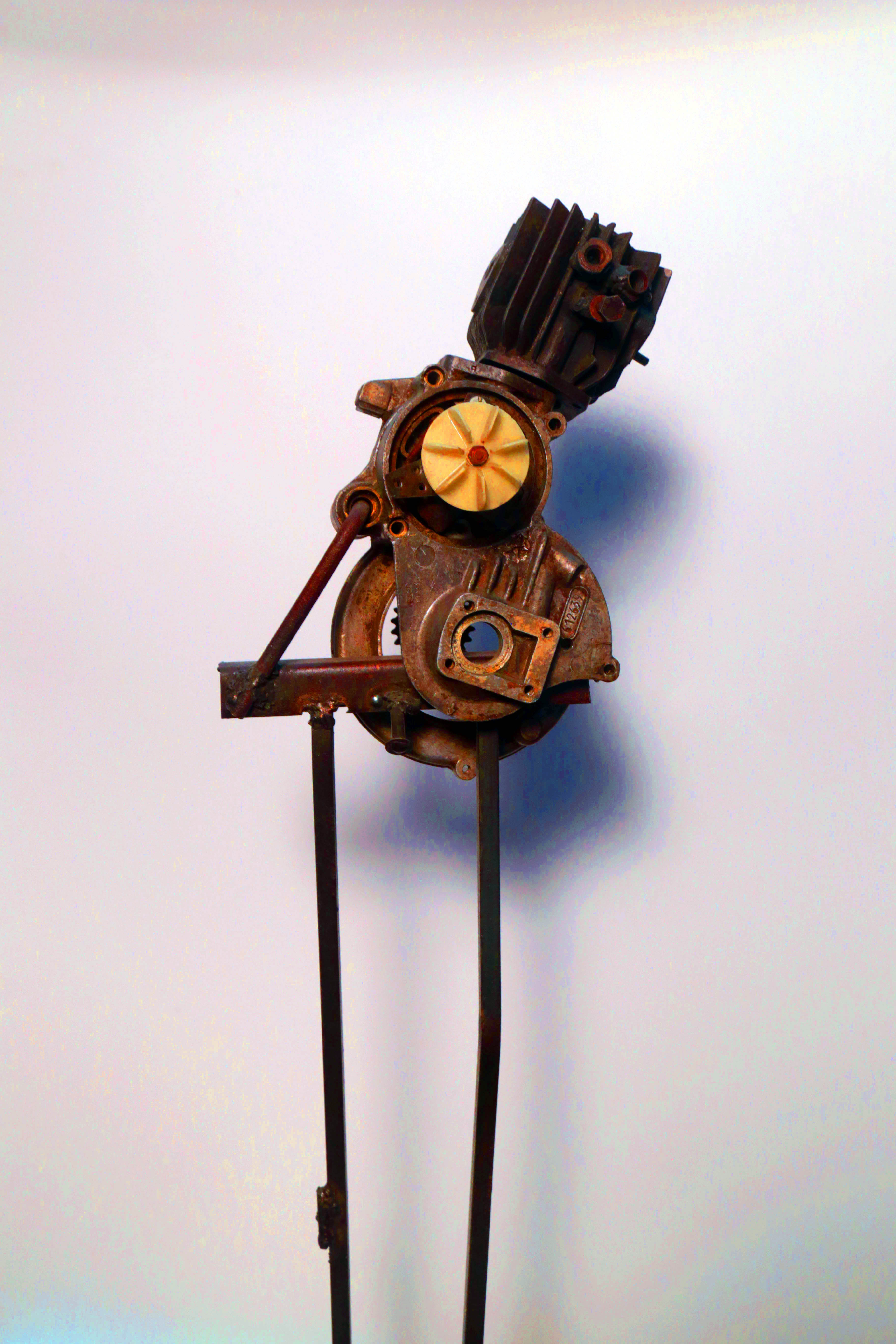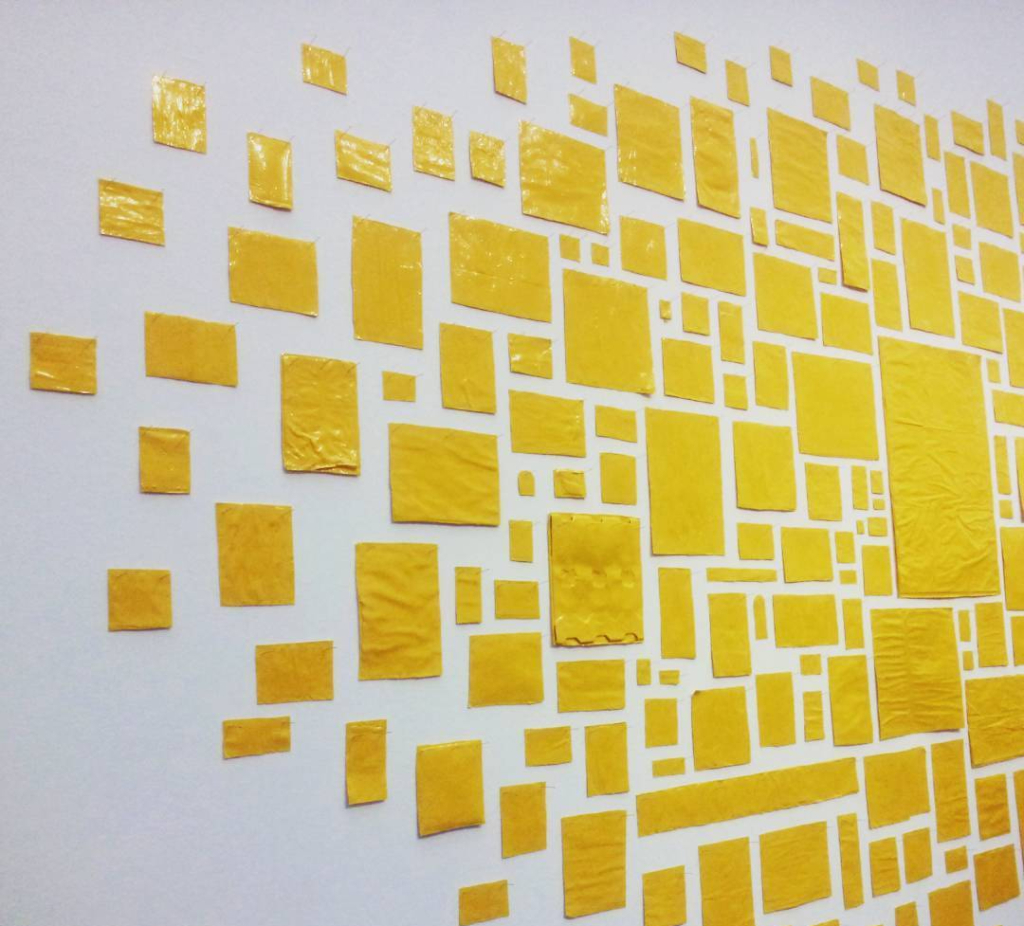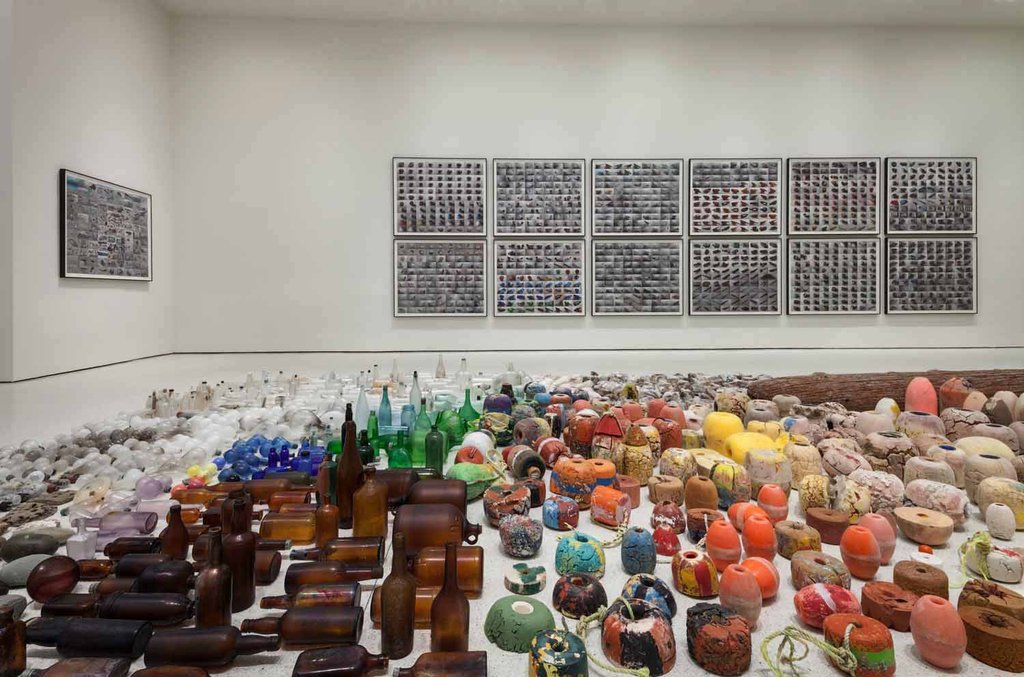What I am, what I was
Self-portraits
Plastic arts workshop
“…The artist, the one who over time has always dealt with the deepest things in life, sometimes considered
as inspired by the Gods themselves, now chooses to deal carefully with the elementary poverty of
straw … the piece of cardboard, the debris, boxes of sweets, traces of the wind, the drain of the rain,
broken dishes … and hundreds of other things”.
(Antoni Tàpies)
Gunter Brus
Jellow Crucifixion 1983
The self-portrait is a product of memory and imagination.
In the mirror, in photography or simply when we worry about the way we look, it is difficult for everyone to present ourselves to the world and come to terms with our own image.
It is basically a question of giving an image, a face and space to our identity.
Looking in the mirror to gain privileged access to our soul.
Let us look in the mirror without a mirror and by looking at others.
I would like to use these differences and to venture into the paradox of imagination to build unexplainable forms.
To use technique to reverse the operational logic.
To dominate the hidden side of things, to study their ironic and surreal side.
To play with the potential of chance.
To start from the shape, appearance and design of one of our objects to transform it.
To find clarity within an intuition and to dominate it consciously.
To draw a line that builds us and plunges into an unscientific field.
We will make our self-portrait with objects from our lives, worn out, soiled, created for something and used for a different purpose, even meaningless but corrupted by our experience.
Each of us is different in their features and in countless little and beautiful things.
The posture of the body, the accents over facial expression, the flashes in the eyes, a set of objects; this is a reading exercise that goes straight to the origin of the ego.
“Every painter paints himself”, they said back in the Renaissance.
A good portrait should steal the soul.
The self-portrait is an autobiographical work; it explores the private, a person’s mental state and reactions to life.
Much more than the portrait, a self-portrait deals with the crux of investigating people’s own identity.
The self-portrait is an invitation to go back to looking at yourself and then look back at the universe.
It is a confession, an exam, an opportunity.
It is an allegory and a symbol, a story and a lie.
It can be total fiction or unconscious truth.
To do this we can use:
alarm clocks, glasses, maps, glass bottles,
drawings, sheets, envelopes, paper, coffee machines,
twine, strings, glue, cups,
jars, old pieces of wood,
driftwood from the beach,
nails, hammers,
boxes, brushes, buckets,
rust, postcards, plastic bottles,
books, fans, footballs, old toys,
new toys,
fabrics, curtains, cushions, feathers,
pieces of computers,
scraps of paper,
iron, sheet metal, scissors, ribbons, shoes, clothes,
photographs, light bulbs,
telephone books, playing cards,
posters, newspapers, irons,
electric switches,
pens, markers, pencils, wheels of all sizes, gears,
suitcases, cartons, propellers, springs,
marbles, chess,
umbrellas, wire, keys,
bicycle parts,
headlights, parking lights, rubber bands, chairs,
carpets, toothbrushes,
deck brushes,
brooms, tin boxes, vases, wicker baskets,
tennis balls, socks, thread, wool,
clothespins, combs, sponges,
colours, pencils, coloured glass, rocks, bamboo …
We will use the hammer with the nails, the welding machine and the computer, a pencil and a string,
rock and paper, motors and clay, eyes, attention and hands more than anything else.
Jim Dine
Self-portrait working on the wall 2009
PATHS – OASES
Due to the complexity of meanings and directions, and to make sure this game is a free act, there will be some rules, some categories or spheres to stick to.
Every self-portrait that we will create should fall into one of these areas, to which we may be attached, even
by a simple string, with a knot that cannot be untied.
Paths are like oases where we can stop and nourish ourselves to embark on a personal journey.
A place that some “model” artists fall into.
Each oasis has a connection with the others, like a river that connects them, but with no defined, transparent structure;
they are like containers with their own inner movement.
Each path is linked to two or more works by representative artists, which can be
a major source of inspiration. These references will help us face our challenges.
Each image can provide an interpretation, but not an explanation.
It will be the sphere that we will have to stick to.
1 THE BARE ESSENTIALS
Tracey Emin
Everyone I have ever slept with 1963 1995 1995
Frida Kalo
What the Water Gave Me 1938
2 DADA
Claude Cahun
Self‐portrait 1932
Joseph Beuys
Fat chair 1964
3 BIG BOXES
Orimoto Tatsumi
Arts Mama: in the big box 2007
Antony Gormley
Lost Horizon 2008
4 UNSEEN
Abraham Cruzvillegas
Blind self-portrait 2015
Shadi Ghadirian
Like every day 2001
5 SELF CLASSIFICATION
Gabriel Orozco
Sand stars 2012
Robin Rhode
Proteus 2020
6 VIDEO PORTRAITS
Bill Viola
Moving portrait 2004
Akiko Ikeda
Installation 2007
A preliminary meeting with the enrolled students will take place a few days before the start of the workshop, to illustrate the theme and direction of the project.
Each artist will have to choose an oasis where they can stop and explore their own path.
In the next meeting we will discuss, choose, personally motivate the paths offered by the images in each sphere; this is where games and beliefs are revealed.
These areas-spheres-paths will be maintained throughout the workshop until the self-portrait is created.
Each participant will need to bring several objects of various sizes that represent them and are particularly important and significant for them to create their self-portrait, delving into the unreachable layers of a work of art.
IL CAMPO
The final and concluding installation of the workshop will be entitled IL CAMPO (THE FIELD), a place that contains each portrait and each completed path.
An outdoor landscape, imaginary or not, a common space that unites individual spheres and paths.
A place; it can be described, highlighted or built with photos, notes, signs and other materials that can help define and refine the idea and meaning.
An oasis that adds value to the overall work, where details emerge more easily and with greater significance.
The arrow that indicates a direction and continuity in your personal game.
THE FIELD helps us stand facing each other.
Workshop Director Antonio Panzuto
With the collaboration of Miguel Leiro (IED Madrid)
Project Collaborator Alessandro Tognon








 Joseph Beuys
Joseph Beuys Orimoto Tatsumi
Orimoto Tatsumi Antony Gormley
Antony Gormley Abraham Cruzvillegas
Abraham Cruzvillegas
 Gabriel Orozco
Gabriel Orozco
 Bill Viola
Bill Viola

